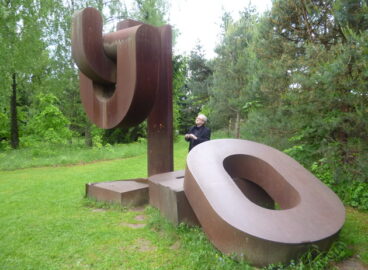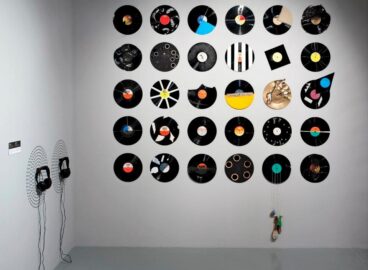In preparation for the research trip to Serbia, Romania and Lithuania in May 2012, the members of C-MAP Fluxus group read a selection of books and articles on the art that has been produced in those countries over the past fifty years. During the trip we received and acquired many more books from the numerous institutions we visited and the individuals we met.
Here we present forty-nine of the three hundred or so titles that we gathered in all. They range from general introductions to the art of Central and Eastern Europe to monographs and exhibition catalogues. The books are listed according to category and geography. General publications appear first, followed by books on art from Romania, Lithuania and Serbia, in that order.
Source contents
Body and the East: From the 1960s to the Present
By Zdenka Badovinać, ed., 1998. exhibition catalogue

This book includes essays on eighty artists from fourteen countries: Bosnia and Herzegovina, Bulgaria, Croatia, Czech Republic, the former GDR, Hungary, Lithuania, Moldova, Poland, Romania, Russia, Slovakia, Slovenia, and Yugoslavia. Introductory essays by Zdenka Badovinac and Kristine Stiles discuss the tradition of an art form that emerged during socialism in cultural centers such as Prague, Belgrade, Ljubljana, Warsaw, and Zagreb. In these places, public actions, particularly on the street, were often banned—and artists arrested—by the police. Therefore many of the actions documented here took place in private apartments, with the artists performing at great personal risk. The art survived not only despite the absence of any market for it, but also despite its marginalization by political regimes. The artists turned their marginalization into an advantage, creating art out of the contingencies and necessities of survival. The art represented here reminds us of the psychological and intellectual freedoms that artistic expression affords under politically repressive conditions.
From the publisher’s note:
This book was published in conjunction with a major retrospective exhibition of body art held at the Museum of Modern Art in Ljubljana. Some of the artists, such as Marina Abramovic and Komar & Melamid, are well known internationally. Others, such as Alexander Brener, Sanja Ivekovic, Laibach, Paul Neagu, and Marko Peljhan, are known to special audiences in the East and West. With essays by Joseph Backstein, Iara Boubnova, Jurij Krpan, Ileana Pintilie, Kristine Stiles, Branka Stipancic, Igor Zabel, and others.
Publisher: Moderna galerija (Museum of Contemporary Art), Ljubljana
Language: Slovenian, English
Primary Documents: A Sourcebook for Eastern and Central European Art Since the 1950s
By Laura Hoptman and Tomas Pospiszyl, eds., 2002
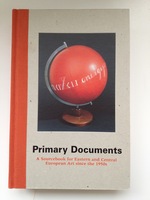
Published in 2002, this anthology remains the most comprehensive collection of reprints of primary sources from post-war Central and Eastern Europe.
From the publisher’s note:
Although a number of books have told the story of modern and contemporary art in Eastern and Central Europe, missing from these accounts have been the sources themselves. This book, the result of years of research by an international team of artists, curators, editors, translators, and scholars working with The Museum of Modern Art, presents primary documents drawn from the artistic archives of Eastern and Central Europe during the second half of the twentieth century. Because the practice of criticism in this region was for many years almost completely suppressed, the writings of the artists themselves often fulfill a critical as well as an aesthetic and ideological function. The manifestoes, photo essays, proposals, scripts, and other writings assembled here comprise the first anthology of this material in any language. The source materials presented—almost all of them never previously untranslated into English—are from Bulgaria, Croatia, Czech Republic, Estonia, Hungary, Latvia, Macedonia, Poland, Romania, Russia, Serbia, Slovakia, and Slovenia. The book is introduced by Ilya Kabakov. Each chapter is preceded by a brief introduction and is followed by a case study that chronicles an event or the creation or reception of an artwork, illustrating the issues raised in that chapter.
Publisher: The Museum of Modern Art, New York
Language: English
Link: https://www.moma.org/research/international-program/research
East Art Map: Contemporary Art and Eastern Europe
By IRWIN, ed., 2006
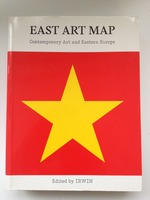
This book is an indispensable resource for anyone researching the art of the region, and it proved very useful in the preparation of our trip. Lutz Becker’s essay “Art for an Avant-Garde Society: Belgrade in the 1970s” gives a good introduction to the city’s lively scene, especially when paired with Branislav Dimitrijević’s “A Brief Narrative of Art Events in Serbia after 1948.” Like those two texts, Elona Lubyte’s chronology of events in Lithuania between 1944 and 2000 and her biographies of the most important artists active at the time in Vilnius provide solid foundations for further investigations.
From the publisher’s note:
East Art Map: Contemporary Art and Eastern Europe is an ambitious attempt to reconstruct the missing histories of contemporary art in Eastern Europe from an East European and artistic perspective. It is perhaps the widest-ranging art documentation project ever undertaken by the East on the East, involving a large network of artists, scholars, curators, and critics coordinated by the IRWIN group over several years. The editors invited eminent art critics, curators, and artists to present up to ten crucial art projects produced in their respective countries over the past fifty years. The choice of the particular artworks (many of them reproduced in color), artists, and events, as well as their presentation, was left exclusively to the individual selectors. In addition, the editors asked experts from both East and West to provide longer texts offering cross-cultural perspectives on the art of both regions.
Publisher: Afterall Books
Language: English
Fluxus East: Fluxus-Netzwerke in Mittelosteuropa (Fluxus East: Fluxus Networks in Central Eastern Europe)
By Petra Stegmann, ed., 2007. exhibition catalogue
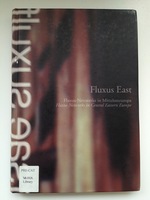
This book, published in conjunction with a series of exhibitions held between 2007 and 2010 in Berlin, Vilnius, Cracow, Budapest, Tallin, Copenhagen and Høvikodden, marks the beginning of an ongoing project initiated and led by Petra Stegmann to document and interpret Fluxus networks in Central and Eastern Europe. The project has its own website, and the book’s eleven extensive essays discuss the artistic practices of figures such as Miklós Erdely, György Galántai, Milan Knížák, Július Koller, Jarosław Kozłowski,Vytautas Landsbergis,Tamás St. Auby, Endre Tót, Jiří Valoch, and Branko Vučićević.
Publisher: Kuenstlerhaus Bethanien, Berlin
Language: German, English
Graphics Without Computers: Hand-Drawn, Embossed, Volumetric—40 Years of Modest Achievements
By Atelierul de grafica, eds., 2012
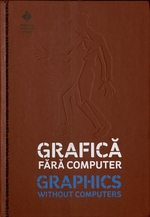
The graphic design of everyday objects and signage is illustrated in this survey of Romanian advertisements, posters, shop signs, and building ornamentation. The publication covers objects and materials produced from 1945 to 1989. We acquired this book from the shop at the National Museum of Contemporary Art in Bucharest.
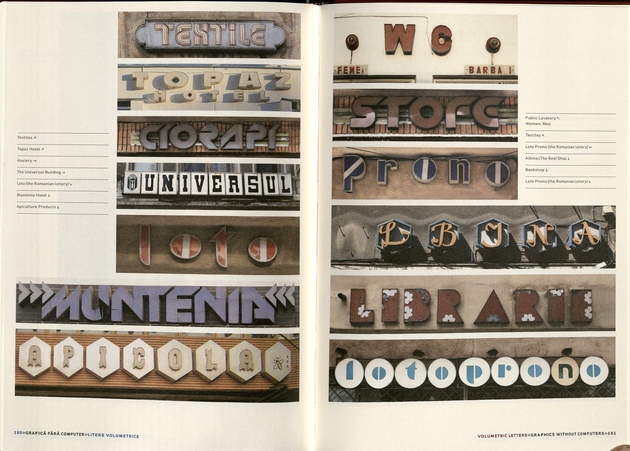
Publisher: Atelierul de grafica, Bucharest
Language Romanian, English
Ion Grigorescu: In the Body of the Victim / W Ciele Ofiary
By Marta Dziewańska, ed., 2010
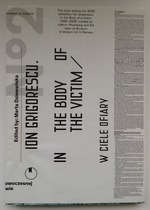
From the publisher’s note:
The book Ion Grigorescu: In the Body of the Victim is an attempt to read the works of one of the most charismatic and original artists from the former Eastern bloc, who until 1989 worked in relative isolation, and whose art can currently be viewed in relation to similar attitudes in other parts of the world.
Ion Grigorescu, born in 1945 in Bucharest and a painter by education, was one of the first Romanian conceptual artists and advocates of anti-art, postulating a radical consolidation of artistic activities with quotidian life. He is the author of numerous films, photographic series, and actions recorded on film, as well as drawings and collages that documented both his private life as well as the passage of the Romanian people from life under Communist regimes to the realities of expansive capitalism. From a formalist perspective, Grigorescu’s oeuvre can be seen as a classical example of Central European experimental art, which the artist deploys in his search for a place within the extremely oppressive political system. The retrospective understanding of his art, beginning in the late 1960s, reveals much more than just another “lost” chapter in the history of the Central European avant-garde. The singularity of Grigorescu’s contribution rests in his introduction of religious and spiritual motifs into Conceptual art, as well as his conviction that political crises are rooted in a crisis of the spirit.
Ion Grigorescu: In the Body of the Victim is the fruit of the exhibition prepared in 2009 by Kathrin Rhomberg and the Museum of Modern Art in Warsaw, which followed two years of research in the artist’s archives. This book is an attempt to read his oeuvre and is part of the long-term publishing policy of the Museum of Modern Art in Warsaw, which set itself the goal of obtaining materials collected in the studios of artists from our region and the subsequent archiving, testing, dissemination, and integration of these materials into the international critical discourse.
An important part of the publication is the richly illustrated section devoted to the work of Ion Grigorescu, featuring mutually overlapping themes explored in parallel: 1. Contemporary Life Seen Through Urban Transformations; 2. Political Commentaries; 3. Family Life and Everyday Rituals; 4. Formal Experiments; 5. Dreams and Psychoanalysis.
The research on the interpretation of Ion Grigorescu’s work, which began in preparation for the exhibition, has been supplemented by texts written for us by excellent critics who are in various ways related to the artist: Cosmin Costinaş, Georg Schöllhammer, Jan Verwoert, and Magda Radu, who offered new and different ways of understanding his work.
Publisher: Muzeum Sztuki Nowoczesnej, Warszawa (Museum of Modern Art, Warsaw)
Language: English, Polish
Geta Brătescu and Ion Grigorescu: Resources—Works from the Collection of MNAC Bucharest
By Muzeul Naţional de Artă Contemporană (National Museum of Contemporary Art), 2007. exhibition catalogue
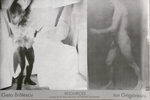
This small publication documents selections of Brătescu and Grigorescu’s work held in the collection of National Museum of Contemporary Art in Bucharest. Our meetings with both artists made clear the degree to which their practices overlapped within their shared social context of Bucharest in the 1970s and 1980s. The catalogue text investigates further the conditions in which the works were produced and characterizes these two artists as figures of resistance during the last two decades of the Communist regime in Bucharest.
Publisher: Muzeul Naţional de Artă Contemporană, Bucharest
Language: English
Geta Brătescu
By Muzeul Naţional de Artă al României (National Museum of Romanian Art), 1999. exhibition catalogue
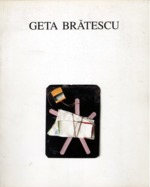
This exhibition catalogue provides the most comprehensive overview to be found of Brătescu’s work, which in recent years has been attracting increasing international attention. The book includes reproductions of her works and photo documentation, and, significantly, it features reprints of press reviews and articles on Brătescu published since the 1970s. These give valuable insight into the reception of the artist’s work in Romania and are translated into English. Not surprisingly, the book has long been out of print.
Publisher: Muzeul Naţional de Artă al României, Bucharest
Language: Romanian, English
Generatia ’80 in Artele Vizuale (The ’80s generation in the visual arts)
By Adrian Guta, 2008

Adrian Guta accompanied our group to the studio of Ion Grigorescu. During the visit, Gupta gave us his book on the development and influence of a generation of Romanian artists who were active in the 1980s. The publication includes entries on several artists we met on our trip, including Iosif Kiraly, Dan Perjovschi, and the subREAL group.
Publisher: Editura Paralela 45, Pitesti
Language: Romanian
IDEA: artă + societate (Idea: arts + society)
By Various 2003

The artist Dan Perjovschi presented us with this issue of the Romanian journal IDEA: arts + society. This particular issue contains a lengthy interview with the artist and a photographic survey of Perjovschi’s erased drawings exhibitions from 1995 to 2012. With text in Romanian and English, the journal offers great coverage of contemporary art and theoretical writing on the Romanian cultural scene. We subscribed as soon as we returned from our trip.
We were also pleased to find out that an article by Edit Andras titled “The Ex-Eastern Bloc’s Position in the New Critical Theories and in the Recent Curatorial Practice,” published in this very issue, mentions the C-MAP research program!
Publisher: Idea Design & Print, Cluj
Language: Romanian, English
Link: https://idea.ro/revista/ro
I Colori delle Avanguardie: Arte in Romania, 1910–1950 (Colors of the Avant-Garde: Romanian Art, 1910–1950)
By Erwin Kessler, 2011
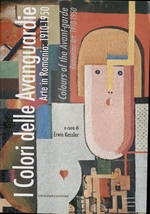
We received this book from the curator Erwin Kessler on the first evening of our trip. The next day, during a visit to the National Museum of Art of Romania (MNAR), we viewed many of the historical avant-garde paintings, collages, and sculptures featured in the catalog.
Publisher: Gangemi, Rome
Language: Italian, English
Pavel Ilie: Constructii Lirice
By George Lecca and Sorina Jecza-Ianovici, 2009
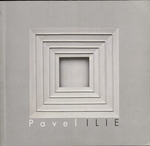
Erwin Kessler also gave us this monograph on the painting and sculpture of Pavel Ilie. Ilie was one of Romania’s few conceptual artists from the 1960s and 1970s to exhibit outside the country. Between 1970 and 1973, he participated in several shows at Edinburgh’s Richard Demarco Gallery.
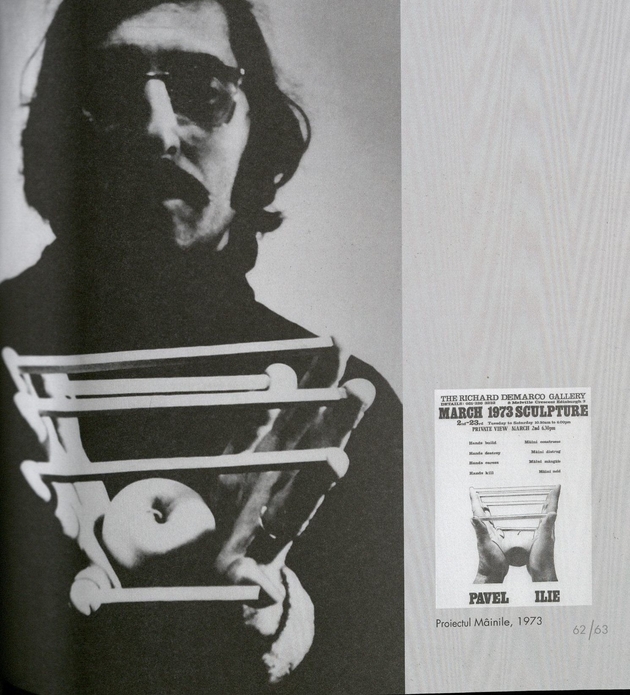
Publisher: Fundatiei Triade, Timisoara
Language: Romanian
Romania Moderna: Documente Fotografice 1859–1949 (Modern Romania: Photographic Documents 1859–1949)
By Mihai Oroveanu, 2011
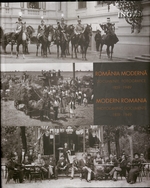
This book presents a collection of historic photographs that construct a visual essay on modern developments in Romania during the late nineteenth and early twentieth centuries. The book was presented to us by its author, Mihai Oroveanu, a preeminent historian of Romanian photography and the director of the National Museum of Contemporary Art.
Publisher: Noi Media: Bucharest
Language: Romanian
Pavilion: Journal for Politics and Culture #16, Tactics for the Here and Now
By Various, 2012
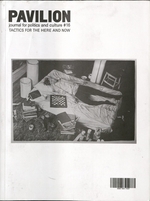
This issue of the journal was published as a reader and catalogue for the 2012 Bucharest Biennial, which was curated by Anne Barlow and opened while we were in Bucharest. The special issue highlights the dispersed sites of the biennial and the various artists’ projects that were installed throughout the city. Participating artists included Iman Issa, Ahmet Ogut, Alexandre Singh, David Maljković, Haris Epaminonda, and Marina Albu.
Publisher: Pavillon, Bucharest
Language: English
Dan Perjovschi: Daily, Weekly, Monthly
By Dan Perjovschi and Barbara Barsch, 2012

The artist Dan Perjovschi gave us this recent catalogue from an exhibition of his work at the Ifa-Galerie in Berlin. Having shown internationally for several decades, Perjovschi is the most widely recognized artist from the so-called ’80s generation in Romania.
Publisher: Verlag für Moderne Kunst, Nürnberg
Language: English
André Cadere / Andrei Cădere
By Magda Radu, 2012
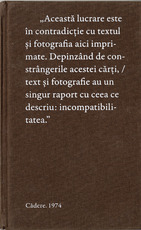
This book assembles a variety of essays that explore Cadere’s practice and focuses particularly on the artist’s life in Romania before he immigrated to Paris in 1967. We received this book from the curators of the National Museum of Contemporary Art during our visit to the museum.
Publisher: Muzeul Naţional de Artă Contemporană (National Museum of Contemporary Art), Bucharest
Language: Romanian, English
Experiment în Artă Românească după 1960 (Experiment in Romanian art since 1960)
By Alexandra Titu and Magda Cârneci, 1997. exhibition catalogue
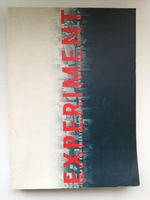
This extremely rich 651-page catalogue of an exhibition shown in Bucharest and Cluj in 1996 presents information about artists active not only in the visual arts, but also in theater, film, dance, music, and literature. Packed with essays, photographs, chronologies, biographies, and excerpts from primary sources, the book brings together a wide store of knowledge. It is unfortunate that the English translations are not of higher quality.
Publisher: Centrul Soros pentru Artă Contemporană (Soros Center for Contemporary Art), Bucharest
Language: Romanian, English
Betono Skulptūra (Concrete Sculpture)
By Various, 1988
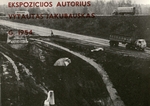
This little pamphlet documents a site-specific sculpture installation in an industrial area of Vilnius in 1985. One of the participants and organizers of the installation, Mindaugas Navakas, provided us with a copy of the publication.The photographs of the work in situ illustrate the degree to which the installed sculptures served as an intervention within the severe industrial landscape.
Publisher: Lithuanian Art Fund, Vilnius
Language: Lithuanian
Vilniaus Istoriju Knyga: Tariama X Baltijos Trienalès Antologija (A Storybook About Vilnius: The As If Anthology of the X Baltic Triennial)
By Ann Demeester, 2010
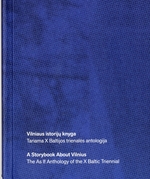
“The book contains a number of true and fictitious stories by writers, curators and artists about the city of Vilnius, that have been generated by the X Baltic Triennial of International Art Urban Stories staged at the Contemporary Art Centre and diverse spaces throughout Vilnius between September 25 and November 22, 2009.” —Title page verso
Publisher: Šiuolaikinio meno centras (Contemporary Art Center), Vilnius
Language: Lithuanian, English
Lithuanian Art, 2000–2010: Ten Years
By Linara Dovydaitytè, Renata Dubinskaitè, Asta Vaičiulytè, and Simon Rees, 2010
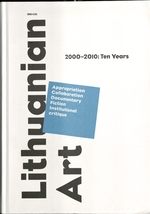
This catalogue of a survey of contemporary Lithuanian art was one of the many publications given to us by the curators of the CAC in Vilnius. Several of the artists we met, including Mindaugas Navakas, Deimantas Narkevicius, Artūras Raila, and Darius Mikšys, are featured in the book.
Publisher: Šiuolaikinio meno centras (Contemporary Art Center), Vilnius
Language: English
Kazė: Akimirkos—tekstai, piesiniai
By Lietuvos Aido Galerija, 2005
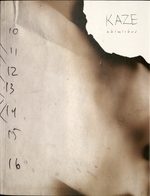
This and another monograph on the work of the Lithuanian artist Kazė were also given to us by Elona Lubytė during her presentation at the National Gallery. The books are copiously illustrated with Kazė’s drawings, prints, scenarios, assemblages, and also with documentary photographs of installations that the artist made in the Lithuanian countryside in the 1970s.
Publishe: Lietuvos Aido Galerija, Vilnius
Language: Lithuanian
ŠMC 1992–2007
By Kęstutis Kuizinas and Julija Fomina, 2007
This book provides extensive documentation of the development of the Contemporary Art Center in Vilnius into an outstanding venue for international contemporary art and a dynamic showcase for work by Lithuanian artists. Kęstutis Kuizinas and other CAC curators introduced the MoMA group to the CAC space and provided us with many recent CAC publications.
Publisher: Šiuolaikinio meno centras (Contemporary Art Center), Vilnius
Language: Lithuanian
Tylusis Modernizmas Lietuvoje: 1962–1982 (Quiet Modernism in Lithuania: 1962–1982)
By Elona Lubytė, 1997
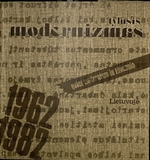
Elona Lubytė spoke to the MoMA group at the National Gallery of Art in Vilnius about her 1997 exhibition Quiet Modernism in Lithuania, which presented a history of underground or unofficial art exhibitions, performances, and happenings during the Soviet era.The catalogue traces a twenty-year history of these events, providing images of actions and artworks as well as lists of participants. We gratefully accepted a copy of the catalogue offered to us by the curator.
Even though the title of the book is translated into English, all of the texts featured in it are solely in Lithuanian.
Publisher: Tyto alba, Vilnius
Language: Lithuanian
Behind the White Curtain
By Darius Mikšys and Kęstutis Kuizinas, 2011

This publication serves as the catalogue for Mikšys’s work in the Lithuanian Pavilion at the 2011 Venice Biennale, as well as a tool for the artist’s project there. Viewers used the catalogue to select items that they wished to view from the collection of work that Mikšys had assembled. As described in the catalogue’s forward: “This book serves as a catalogue for a temporary art collection comprising works by artists who received stipends from the Lithuanian state between 1992 and 2010. Over 300 artists were recipients of these awards; 173 of which accepted the invitation to contribute to this collection….Herein you can choose actual artworks to select for your own personal viewing. They will be brought out from behind the white curtain*…”

Publisher: Šiuolaikinio meno centras (Contemporary Art Center), Vilnius
Language: English
Naujo Muziejaus Vilniuje Galimybiu Studija (Feasibility Study for a New Museum in Vilnius)
By City of Vilnius, 2009
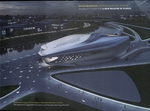
This publication presents a proposal for a new contemporary art museum in Vilnius, a collaboration between the Jonas Mekas Center, the Guggenheim Foundation, and the State Hermitage Museum. The cover shows the winning architectural proposal by Zaha Hadid Architects. At the time of our visit, the Guggenheim Foundation had left the partnership, and plans for the project had been put on hold.
Publisher: City of Vilnius
Language: Lithuanian, English
Vilniaus Sąsiuvinis (Vilnius Notebook), Part 2: 1988–1994
By Mindaugas Navakas, 1995
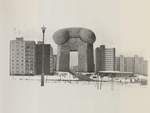
This is Navakas’s second book of collages, in which images of his metal and concrete sculptures are projected onto the architectural landscape of Vilnius. Navakas presented these books to the group during a visit to his open-air studio in Vilnius. We had seen the pages of both books exhibited in the National Gallery of Art on our first day in town.
Publisher: M. Navakas, Vilnius
Language: Lithuanian
Artūras Raila: Roll Over Museum
By Artūras Raila, Lolita Jablonskiene, and Anders Kreuger, 2005
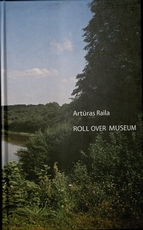
Raila gave a talk to the MoMA group and screened several of his videos from the last fifteen years. Roll Over Museum is an artist’s book that groups together still images from several of Raila’s videos. Each section of the book pictures one of his video works, and the sections are separated by blank white pages. The artist explained that he intended to give the book to the participants in his videos and that they could use the blank pages to further describe the experiences they had had while making the works. The book would then function as an extended conversation about each of the videos.
Publisher: IBID Projects, Vilnius
Language: English
Art of the Baltics: The Struggle for Freedom of Artistic Expression under the Soviets, 1945–1991
By Alla Rosenfeld and Norton T. Dodge, eds., 2002
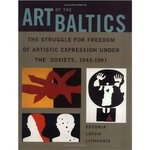
This book gives a general overview of art in the Baltic Soviet Republics of Estonia, Latvia and Lithuania as well as focused accounts of the pre-war, post-war and newest art in each of these individual countries. In preparing our visit to Vilnius, we found Vitkoras Liutkus’s essay “Breaking the Barriers: Art under the Pressure of Soviet Ideology from World War II to Glasnost” and Kestutis Kuzinas’s “Lithuanian Art from 1988 to the Present” to be particularly valuable. Also very useful are the charts in the appendixes listing major historical and cultural events in three countries.
The book was published in conjunction with an exhibition at Rutgers University in New Brunswick, New Jersey, in 2001/2002.
Publisher: Rutgers University Press
Language: English
Žaliasis Tiltas (Green Bridge)
By Algirdas Šeškus and Malvina Jelinskaitė, 2009
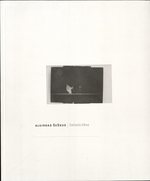
Algirdas Šeškus’s black-and-white photographs document street scenes, domestic interiors, and everyday activities in Lithuania in the 1970s. The following synopsis is printed on the back flap of the publication: “Green Bridge is a novel, a photographic essay, a book of photographs, a scenario, a libretto, simply a story, or artwork created by a thirty-year-old photographer thirty years ago (30+30).”
Publisher: Kita Fotografija, Vilnius
Language: Lithuanian, English
Kazė: tapyba, monotipijos, piešniai
By Kazė Zimblytė and Elona Lukšėno, 1999
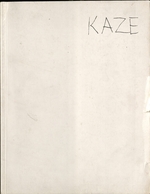
This and another monograph on the work of the Lithuanian artist Kazė were given to us by Elona Lubytė during her presentation at the National Gallery. The books are copiously illustrated with Kazė’s drawings, prints, scenarios, assemblages, and also with documentary photographs of installations that the artist made in the Lithuanian countryside in the 1970s.
Publisher: Lietuvos Aido Galerija, Vilnius
Language: Lithuanian, English, German
On Normality: Art in Serbia 1989–2001
By Branislava Anđelković, Branislav Dimitriević, and Dejan Sretenović, 2006
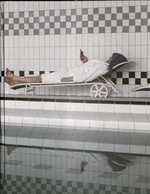
This large catalogue is a substantial document of contemporary Serbian art published by the Museum of Contemporary Art in Belgrade. We received this publication during a visit to the curatorial offices of the now closed institution. The exhibition examines a period in which Serbian society was transformed by economic collapse, war, and nationalism and surveys a broad range of artistic practices that grappled with these conditions of social trauma and upheaval.
Publisher: Museum of Contemporary Art, Belgrade
Language: English
Želimir Žilnik: For an Idea–Against the Status Quo
By Branka Ćurčić, Sarita Matijević, Zoran Pantelić, Želimir Žilnik, ed., 2009
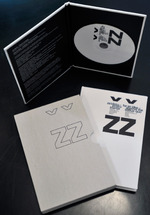
This publication contains essays on the work of the esteemed Black Wave filmmaker Želimir Žilnik and comes with a DVD of ephemera, press clippings, and other digital reproductions of material from Žilnik’s personal archive. Of special note among the offerings on the DVD is a digital copy of the third issue of ROK magazine. Published in 1969, that issue was dedicated entirely to Žilnik’s early film Early Works. We received this publication from the filmmaker at a meeting in Novi Sad.
Publisher: New Media Center_kuda.org and Playground produkcija, Novi Sad
Language: English, Serbian
Impossible Histories: Historical Avant-Gardes, Neo-Avant-Gardes, and Post-Avant-Gardes in Yugoslavia 1918–1991
By Dubravka Djurić and Miško Šuvaković, 2003
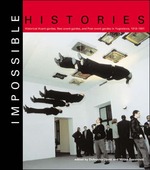
This book is crucial for anyone who wishes to study the art of Yugoslavia, whether of the early or late 20th century. It was also essential reading for our C-MAP group in preparation for our explorations of Belgrade and Novi Sad.
From the publisher’s note:
Impossible Histories is the first critical survey of the extraordinary experiments in the arts that took place in the former Yugoslavia from the country’s founding in 1918 to its breakup in 1991. The combination of Austro-Hungarian, French, German, Italian, and Turkish influences gave Yugoslavia’s avant-gardes a distinct character unlike those of other Eastern and Central European avant-gardes. Censorship and suppression kept much of the work far from the eyes and ears of the Yugoslav people, while language barriers and the inaccessibility of archives caused it to remain largely unknown to Western scholars. Even at this late stage in the scholarly investigation of the avant-garde, few Westerners have heard of the movements Belgrade surrealism, signalism, Yugo-Dada, and zenitism; the groups Alfa, Exat 51, Gorgona, OHO, and Scipion Nasice Sisters Theater; or the magazines Danas, Red Pilot, Tank, Vecnost, and Zvrk.
The pieces in this collection offer comparative and interpretive accounts of the avant-gardes in the former Yugoslavian countries of Croatia, Serbia, and Slovenia. The book is divided into four sections: Art and Politics; Literature; Visual Art and Architecture; and Art in Motion (covering theater, dance, music, film, and video). All of the contributors live in the region and many of them participated in the movements discussed. The book also reprints a selection of the most important manifestos generated by all phases of Yugoslav avant-garde activity.
Publisher: MIT Press
Language: English
Link: https://mitpress.mit.edu/9780262042161/impossible-histories/
Zenit, 1921–1926
By Vidosava Golubović and Irina Subotić, 2008
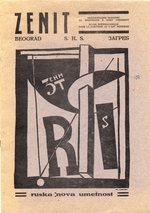
Zenit was an important periodical of the historic avant-garde of Eastern and Central Europe. We saw this beautiful reprint of the magazine in the offices of the Museum of Contemporary Art in Belgrade on the last day of our trip and were able to order a copy of the reprint from the publisher, the National Library of Serbia.
Publisher: Narodna biblioteka Srbije, Belgrade
Language: Serbian (Cyrillic) with summaries in English
Dragoljub Todosijević-Raša: Pavilion of Serbia at the 54th International Art Exhibition, la Biennale di Venezia, 2 Vols.
By Sanja Kojić Mladenov and Dragoljub Todosijević-Raša, 2011
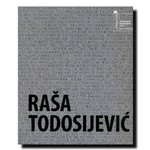
These two volumes document Todosijević’s installation in the Serbian Pavilion at the 54th Venice Biennale. Components of the installation were also exhibited in the Museum of Contemporary Art of Vojvodina during our visit. The second, larger volume of the set is a retrospective catalogue of Todosijević’s work.
Publisher: Muzej savremene umetnosti Vojvodine (Museum of Contemporary Art), Novi Sad
Language: English, Serbian, German, Italian
Szombathy Art
By Nebojša Milenković, 2005
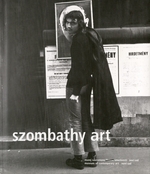
Bálint Szombathy, who, with Slavko Matković, founded the Bosch + Bosch group in Subotica, joined us when we visited the Museum of Contemporary Art in Novi Sad. The artist and the museum presented us with the catalogue of Szombathy’s 2005 retrospective exhibition. It contains images and documents of the Bosch + Bosch group’s activities and covers the extensive oeuvre of performances, installations, visual poetry, mail art, and video works that Szombathy developed over the next forty years.
Publisher: Muzej savremene umetnosti Vojvodine (Museum of Contemporary Art), Novi Sad
Language: Serbian, English
Naše Skupno Delo=Naš Zajednički Rad (Our group work): Bojan Bole, Marko Pogačnik, Mirko Radojičić, Maja Savić, Paja Stanković, Miško Šuvaković, Biljana Tomić
By Various, 1979

This small catalogue is from a 1979 exhibition at the Student’s Center in Belgrade that also traveled to the Gallery of Contemporary Art in Zagreb the same year. Participants included Marko Pognačnik, a member of the OHO group, and Bijana Tomic and Miško Suvaković, both of whom we met during our time Belgrade and Novi Sad. The catalogue reproduces some of the collaborative projects created for the show.
Publisher: Galerija Studentskog Kulturnog Centra, Belgrade
Language: Serbo-Croatian, English
SKC in ŠKUC: The Case of SKC in the 1970s
By Various, 2008
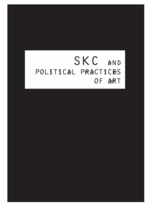
An exhibition of the same name, curated by Prelom Kolektiv, was part of a wider research initiative called “Political Practices of (Post-)Yugoslav Art.” As the members of that project reveal: “The ‘case’ of the Students’ Cultural Centre (SKC) in Belgrade reveals important traits of a general constellation of the art and politics in the Socialist Federal Republic of Yugoslavia (SFRY). It is the characteristic of strategies after 1968 to contain, pacify and institutionalize student or youth culture as an ‘organized alternative’. Like many other student cultural centers throughout SFRY, the SKC was an official state-constituted cultural institution offering young artists and cultural workers a ‘roof over their heads’. At the same time, it was a place of avant-garde experimentation—the introduction of new technologies, new expressions, new forms of political activism and self-organization.” C-MAP Fluxus group members read this publication with particular interest before visiting the archives of SKC.
The pdf version of the catalog is available online.
Publisher: ŠKUC, Ljubljana
Language: English
Slavko Matković: Ich bin Künstler
By Balint Sombati and Ješa Denegri, 2005
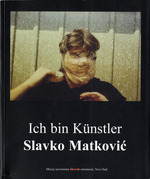
We received this publication during our visit to the Museum of Contemporary Art in Novi Sad. The catalogue was published on the occasion of Slavko Matković’s retrospective exhibition. It contains reproductions of the artist’s visual poetry, performances, publications, mail art, comics, drawings, and paintings and spans his early work in Subotica with the collective Bosch + Bosch to his later painting and performance work.
Publisher: Muzej savremene umetnosti Vojvodine (Museum of Contemporary Art), Novi Sad
Language: Serbo-Croatian, English
Neša Paripović: Postajanje Umetnošću, Radovi 1970–2005 (Becoming art, works 1970–2005)
By Dejan Sretenović, ed.
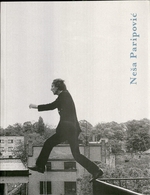
The cover of this retrospective catalogue looked familiar. The image—a photograph taken during the filming of Paripović’s 1977 N.P.—was also used on the cover of the catalogue for the Centre Pompidou’s recent survey of Central and Eastern European Art, Promises of the Past and as the show’s press image. Paripović was a Belgrade artist and a peer of Marina Abramović, Rasa Todosijević, and others in the community of artists that gathered around the Student’s Center Gallery in Belgrade. We received this catalogue from the curators at the Museum of Contemporary Art in Belgrade.
Publisher: Muzej savremene umetnosti (Museum of Contemporary Art), Belgrade
Language: English, Serbian
The New Art Practice in Yugoslavia: 1966–1978
By Marijan Susovski, ed., 1978
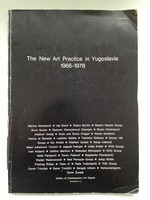
Published in 1978 solely in English, this book challenges the presupposition that the art of Central and Eastern Europe was barely known—or could not have been known—to the Western public before the collapse of the Soviet Bloc. It is almost surprising today how well it documented art of more than 40 artists and artists’ groups (among them Braco Dimitrijević, Tomislav Gotovac, Bogdanka Poznanović, Goran Trbuljak, and OHO group) with reproductions of works, documentary photographs and extensive essays. An introductory overview, “Art in the Past Decade” was written by Jesa Denegri.
Publisher: Gallery of Contemporary Art, Zagreb
Language: English
Grupa Kôd, Grupa (ə, Grupa (ə- Kôd
By Miško Suvaković, 1995
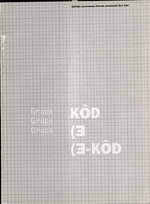
A first step in studying the neo-avant-garde activities of the 1970s in Novi Sad is to figure out the various genealogies of the artists’ collectives that were active at that time. This publication, given to us by Miško Suvaković during our visit to Novi Sad, provides a retrospective survey of the work of Grupa Kôd and Grupa (ə, and also the work of Grupa (ə- Kôd, which included participants from the two other, earlier groups.
Publisher: Galerija Savremene Likovne Umetnosti, Novi Sad
Language: Serbo-Croatian
Attila Černik
By Miško Suvaković, 2009
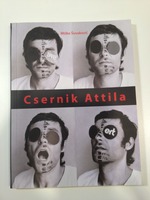
Attila Cernik was a collaborator with the Bosch + Bosch group in the 1970s, and like the artists Balint Szombathy and Katalin Ladik, he cultivated exchanges with the Hungarian neo-avant-garde art scene. Cernik’s visual poetry, text performances, and written inscriptions on bodies were emblematic of the experiments with language that were conducted within the conceptual practices of his generation of artists in Central and Eastern Europe.
Publisher: Muzej savremene umetnosti Vojvodine (Museum of Contemporary Art of Vojvodina), Novi Sad
Language: Serbian
Moć Žene: Katalin Ladik, Retrospektiva 1962–2010 (The Power of a Woman: Katalin Ladik, Retrospective 1962–2010)
By Miško Šuvaković, Dragomir Ugren, and Gabrijela Šuler, 2010
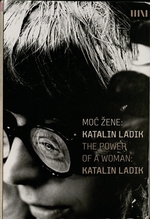
In the 1970s, Katalin Ladik was a contributor to the Bosch + Bosch group in Subotica as well as a participant in the activities of the Youth Tribunal Center in Novi Sad and the Student’s Center Gallery in Belgrade. Miško Šuvaković edited this large retrospective catalogue on Ladik’s career as a visual artist, poet, television actress, and stage performer in Serbia and Hungary.
Publisher: Muzej savremene umetnosti Vojvodine (Museum of Contemporary Art of Vojvodina), Novi Sad
Language: Serbian, English
Bogdanka I Dejan Poznanović: Umetnost, Mediji I Aktivizam na Kraju Moderne
By Miško Šuvaković, 2011
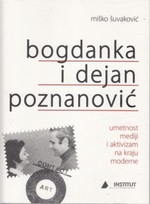
Bogdanka Poznanovic and her husband, Dejan, were central figures in the Novi Sad art scene. This catalogue traces their activities from the 1960s to the 1980s and clearly reveals their influence on the younger generation of New Art Practice artists in Novi Sad and Belgrade. It is one of the many books given to the MoMA group by Miško Šuvaković.
Publisher: Muzej savremene umetnosti Vojvodine (Museum of Contemporary Art of Vojvodina), Novi Sad
Language: Serbian
Stories on Art
By Raša Todosijević, 1995

The back matter of this publication states that Raša Todosijević has been writing his Stories on Art since 1980. The texts are short stories, experimental fables and vignettes, many just a few paragraphs in length. This small volume contains twenty-four of them. We received the book when we interviewed Todosijević in his Belgrade apartment.
Publisher: Private-Public, Belgrade
Language: English
Hvala Raši Todosijeviću (Thank you, Raša Todosijević)
By Raša Todosijević and Dejan Sretenović, 2002

From the late 60s onwards,Todosijević was a primary figure in Belgrade’s neo-avant-garde scene, which formed around the events and exhibitions that were held at the Student Cultural Center. This catalogue is from an exhibition at the Museum of Contemporary Art in Belgrade that traced the artist’s career and contextualized his practice within its social and political milieu. We received it from the artist when we met him for an interview at his apartment in Belgrade.
Publisher: Muzej savremene umetnosti (Museum of Contemporary Art), Belgrade
Language: Serbian, English
Political Practices of (Post-) Yugoslav Art: Retrospective 01
By Jelena Vesić and Zorana Dojić, ed., 2010
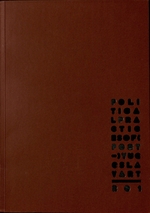
This impressive catalogue documents a series of events produced by several curatorial collectives at sites in Bosnia, Croatia, Serbia, Croatia, Slovenia, Russia and Germany. The show was organized jointly by kuda.org, the Zagreb-based collective WHW, the Prelom kolektiv from Belgrade, and SCCA/pro.ba from Sarajevo. Ana Janevski, who is now Associate Curator in the Department of Media and Performance at MoMA, was involved too. Exhibition was curated by Jelena Vesic, member of theoretical collective Prelom.
Many of the curatorial projects and discussions described in this volume worked towards a historical survey of the neo-avant-garde scenes in the former Yugoslavia during the 1960s and 1970s. We read this publication in preparation for the trip and also were given copies of the catalogue both when we visited the offices of kuda.org in Novi Sad and during our stop at the Museum of Contemporary Art in Belgrade.
Participating artists, curators and theorists: DeLVe (Ivana Bago and Antonia Majača) / kuda.org (Zoran Pantelić, Branka Ćurčić, Borka Stojić) / Kunsthistorisches Mausoleum / Prelom kolektiv (Radmila Joksimović, Zorana Dojić, Dušan Grlja, Jelena Vesić) / SCCA/pro.ba (Dunja Blažević, Asja Hafner) / WHW (Ivet Ćurlin, Ana Dević, Nataša Ilić, Sabina Sabolović, Dejan Kršić) / Ana Janevski /Miklavž Komelj, Lidija Radojević, Tanja Velagić, Jože Barši / Chto Delat (in collaboration with: Vladan Jeremić and Rena Raedle) /Igor Grubić / Dejan Habicht and Tanja Lažetić / David Maljković /Darinka Pop-Mitić /Hito Steyerl
Publisher: Prelom kolektiv, Belgrade
Language: English
Grupa 143
By Dragica Vukadinović, 1979

This catalogue presents the activities of the artists’ collective Grupa 143. The contents include photographs and written descriptions of performances, meetings, and installations from the years 1975 to 1977. Published on the occasion of an exhibition at the Students Cultural Center in Belgrade, the book was given to us in Belgrade by Miško Suvaković, who was a member of Grupa 143.
Publisher: Galerija Srećna nova umetnost, Belgrade
Language: Serbo-croatian, English
